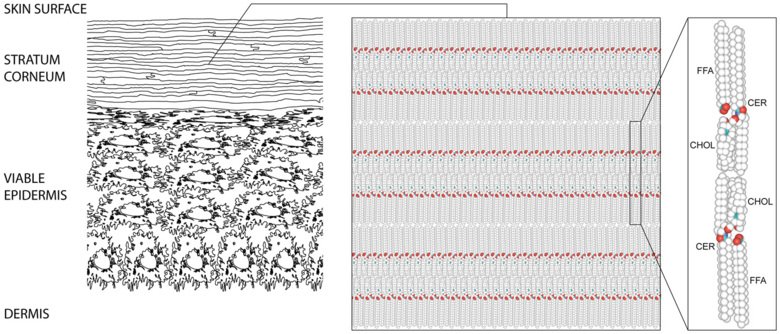Our research
Our skin protects us from water, chemicals, microorganisms, sun radiation and dehydration. Until recently, the understanding of how this protection is accomplished has been incomplete. Now, Lars Norlen and his colleagues have identified the basic molecular structure of the skin layer that forms this protecting barrier.
Their findings show that the barrier lies in the fat molecules, lipids, that occupy the space between the cells in the outermost layer of skin, the stratum corneum. Normally, lipids arrange themselves into a two-layered sheet, or bilayer, with all of their hydrophobic (water-repelling) tails pointing inwards and their hydrophilic (water-attracting) heads outwards. However, the lipid molecules in the stratum corneum are stretched-out, so that the two tails of each molecule point in opposite directions. The molecules are stacked on top of each other in an alternating fashion, forming a structure which is much more impermeable than a normal bilayer. The fat structure also allows for the horny layer cells to slide on each other, making the skin flexible and thereby contribute to its mechanical robustness.

The researchers developed a novel experimental approach for this particular project, combining cryo-electron microscopy defocus series with molecular modelling and electron microscopy simulation. We froze healthy, living, human skin to below -140 °C, preserving every molecule in its native location. We then sliced the tissue into layers 25 to 50 nanometres thick and examined the layers using an electron microscope.
The research has above all been driven by the vision of enabling drug administration through the skin instead of taking pills via the mouth, in order to increase efficacy and reduce side effects. The team now aim at developing a computer model of the skin, as well as artificial skin, for screening drugs and other chemicals that could potentially open the skin barrier.

